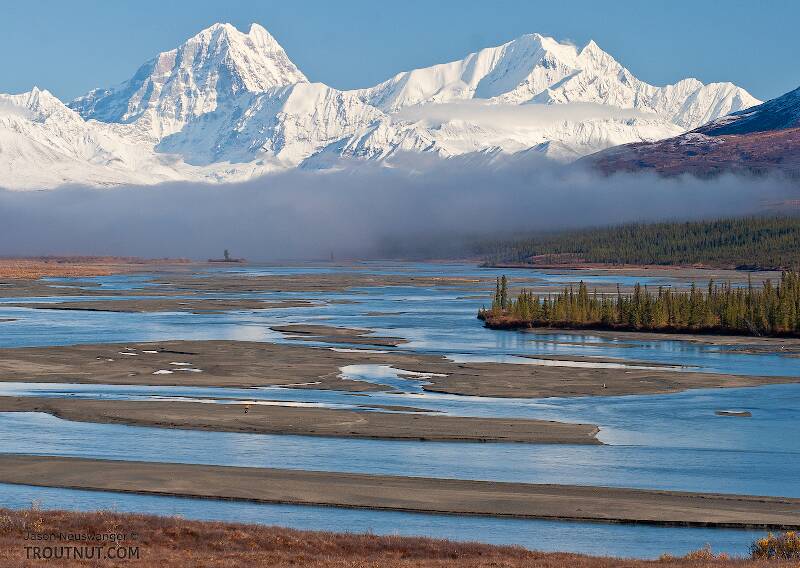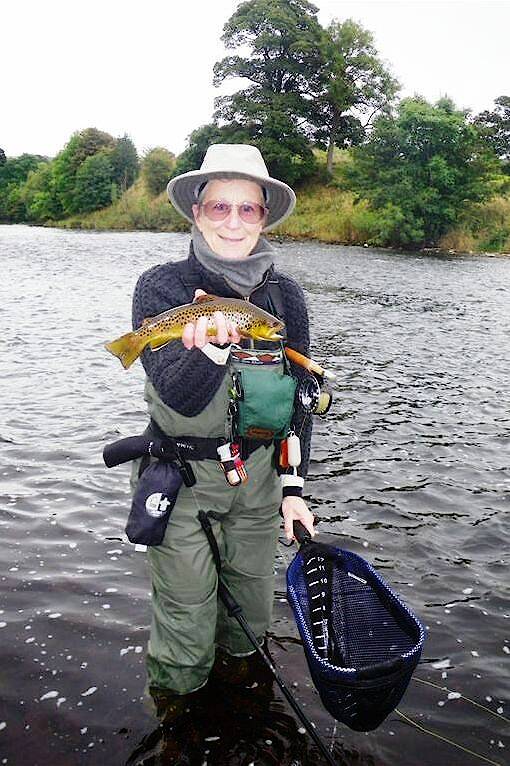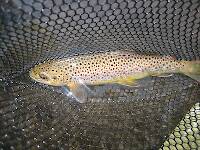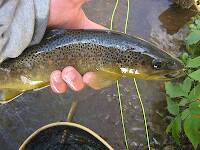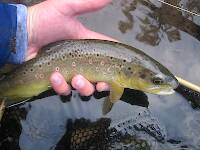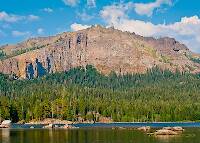
Blue-winged Olives
Baetis
Tiny Baetis mayflies are perhaps the most commonly encountered and imitated by anglers on all American trout streams due to their great abundance, widespread distribution, and trout-friendly emergence habits.
Featured on the forum


Troutnut is a project started in 2003 by salmonid ecologist Jason "Troutnut" Neuswanger to help anglers and
fly tyers unabashedly embrace the entomological side of the sport. Learn more about Troutnut or
support the project for an enhanced experience here.
Ducfat
Posts: 10
Posts: 10
Ducfat on Mar 6, 2008March 6th, 2008, 3:45 am EST
Any recommendations/favorites for catch and release nets? Price vs quality. Also, anyone lake fishing from a canoe, advice appreciated.
CaseyP on Mar 6, 2008March 6th, 2008, 9:21 am EST
i really like my folding MeasureNet. it is not beautiful, but it folds to fit in the wader bag, it measures the fish automatically, its mesh is kind, and the bag zips off for washing or replacement. they're on the web--just Google it.
"You can observe a lot by watching." Yogi Berra
JAD on Mar 6, 2008March 6th, 2008, 10:27 am EST
I use a fisknat ---http://www.fisknat.com/
It is also light weight has a light rubber net that doesn't harm fish.
Good small company -a bit pricey though -a lot of the guides use them.
John
It is also light weight has a light rubber net that doesn't harm fish.
Good small company -a bit pricey though -a lot of the guides use them.
John
They fasten red (crimson red) wool around a hook, and fix onto the wool two feathers which grow under a cock’s wattles, and which in colour are like wax.
Radcliffe's Fishing from the Earliest Times,
Martinlf on Mar 6, 2008March 6th, 2008, 11:04 am EST
Love the fisknat.
"He spread them a yard and a half. 'And every one that got away is this big.'"
--Fred Chappell
--Fred Chappell
Taxon on Mar 6, 2008March 6th, 2008, 2:04 pm EST
Ducfat-
I have quite a bit of experience lake fishing from a canoe. Do you already have one, or are you thinking of purchasing one to use for lake fishing? Also, can you describe the type of lakes you would be likely to be fishing with a canoe? Answers to these questions will allow me to give you more useful advice.
Also, anyone lake fishing from a canoe, advice appreciated.
I have quite a bit of experience lake fishing from a canoe. Do you already have one, or are you thinking of purchasing one to use for lake fishing? Also, can you describe the type of lakes you would be likely to be fishing with a canoe? Answers to these questions will allow me to give you more useful advice.
Ducfat
Posts: 10
Posts: 10
Ducfat on Mar 6, 2008March 6th, 2008, 5:37 pm EST
Roger,
I've got a 17 foot Souris River canoe. The wife, myself, and the four-legged ballast will be fishing in smaller mountain lakes and reservoirs (most likely less than 300 acres in size) in southern Utah, Arizona, and up into central Nevada.
Thanks,
Tim
I've got a 17 foot Souris River canoe. The wife, myself, and the four-legged ballast will be fishing in smaller mountain lakes and reservoirs (most likely less than 300 acres in size) in southern Utah, Arizona, and up into central Nevada.
Thanks,
Tim
Taxon on Mar 6, 2008March 6th, 2008, 10:13 pm EST
Tim-
Okay, that gives me a pretty good idea. Incidentally, that sounds like a seriously nice canoe. For reasons of safety, both you and your wife should wear a PFD whenever in the canoe, and should have a change of dry clothing in the vehicle.
Next in priority comes comfort. Fishing for multiple hours without any back support can cause sufficient back pain to ruin one’s day. Some things I have found useful are a seat backrest, frequently stretching, and/or frequent stops on the shore to walk around.
You didn’t mention whether or not both you and your wife will be paddling and/or flyfishing, but I’ll attempt to address several scenarios. If both are competent paddlers, and only one is flyfishing, it is advantageous for the non-flyfisher to be responsible to positioning the canoe to maximum casting angle of the flyfisher. Of course, this is most easily accomplished from the primary paddling seat.
If both will be flyfishing, or if wind is an issue, it is highly advantageous to have a 2-anchor system, so the canoe can be held in a steady position, which offers decent casting angles for both anglers.
When trolling a fly, it is extremely difficult for the person responsible for paddling to fish effectively, as the seating position generally results in the fly rod pointing at a 9-10 o’clock position. This is not optimal position for the fish setting the hook itself, and by the time the paddle has been placed in the canoe, and the flyrod picked up, the fish will often be gone, particularly with barbless hooks. There are several things one can do to lessen this problem. One is use of a rodholder, which allows the rod to be pointed behind canoe. Another is use of an electric motor, which allows the person occupying the paddling position to have a hand free.
Anyway, hope at least one of these tips resonates with you.
Okay, that gives me a pretty good idea. Incidentally, that sounds like a seriously nice canoe. For reasons of safety, both you and your wife should wear a PFD whenever in the canoe, and should have a change of dry clothing in the vehicle.
Next in priority comes comfort. Fishing for multiple hours without any back support can cause sufficient back pain to ruin one’s day. Some things I have found useful are a seat backrest, frequently stretching, and/or frequent stops on the shore to walk around.
You didn’t mention whether or not both you and your wife will be paddling and/or flyfishing, but I’ll attempt to address several scenarios. If both are competent paddlers, and only one is flyfishing, it is advantageous for the non-flyfisher to be responsible to positioning the canoe to maximum casting angle of the flyfisher. Of course, this is most easily accomplished from the primary paddling seat.
If both will be flyfishing, or if wind is an issue, it is highly advantageous to have a 2-anchor system, so the canoe can be held in a steady position, which offers decent casting angles for both anglers.
When trolling a fly, it is extremely difficult for the person responsible for paddling to fish effectively, as the seating position generally results in the fly rod pointing at a 9-10 o’clock position. This is not optimal position for the fish setting the hook itself, and by the time the paddle has been placed in the canoe, and the flyrod picked up, the fish will often be gone, particularly with barbless hooks. There are several things one can do to lessen this problem. One is use of a rodholder, which allows the rod to be pointed behind canoe. Another is use of an electric motor, which allows the person occupying the paddling position to have a hand free.
Anyway, hope at least one of these tips resonates with you.
Quick Reply
Related Discussions
Topic
Replies
Last Reply
10
Dec 16, 2007
by Wbranch
by Wbranch
10
Sep 10, 2012
by PaulRoberts
by PaulRoberts
Re: For the post made about "fighting for fish", I know what they mean!
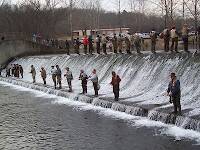
In the Photography Board by Flybinder

In the Photography Board by Flybinder
7
Dec 15, 2007
by Flybinder
by Flybinder
15
May 8, 2013
by Brookyman
by Brookyman

